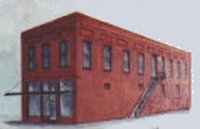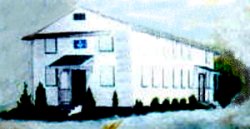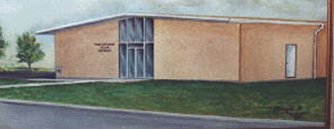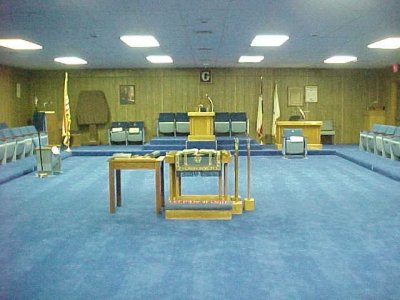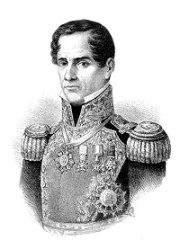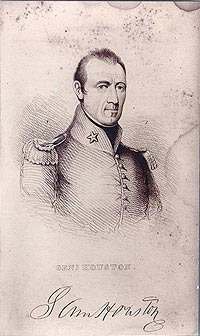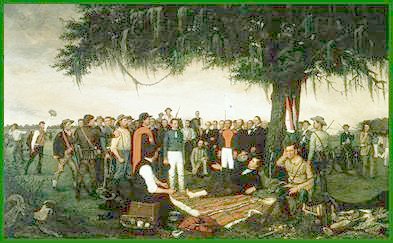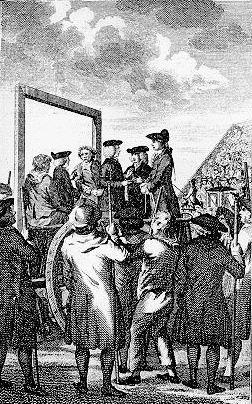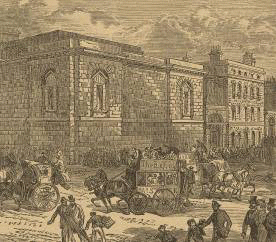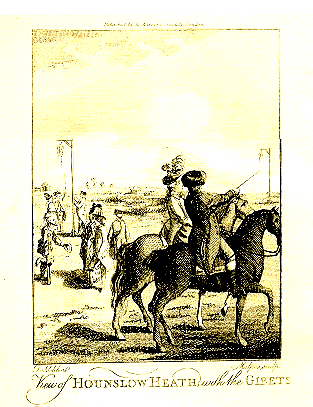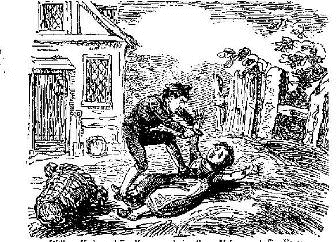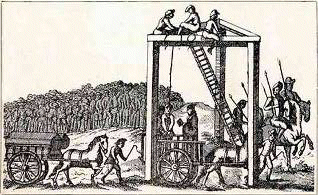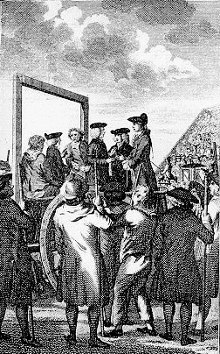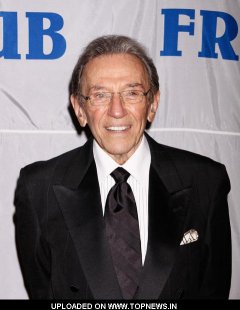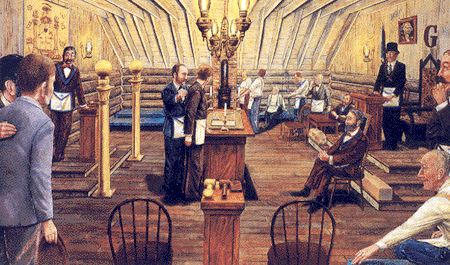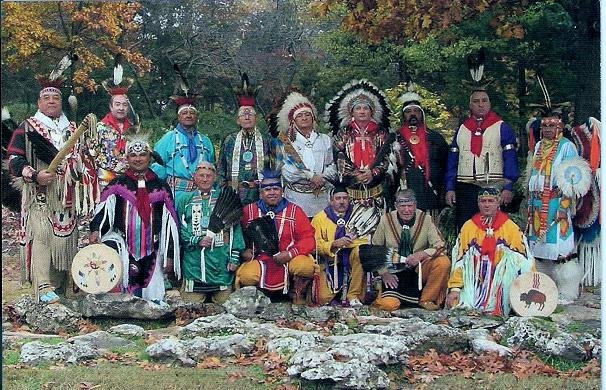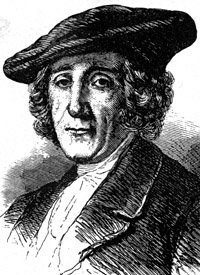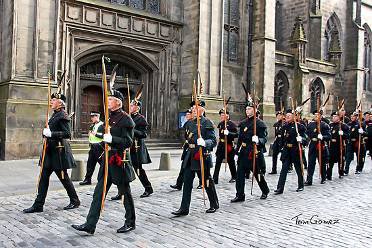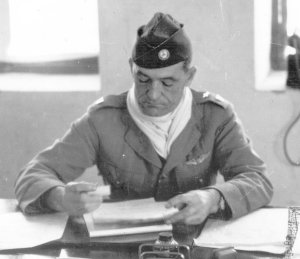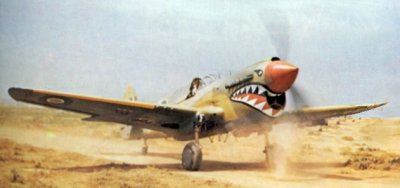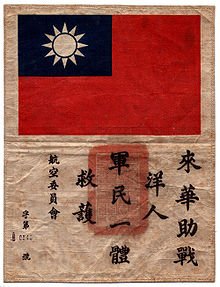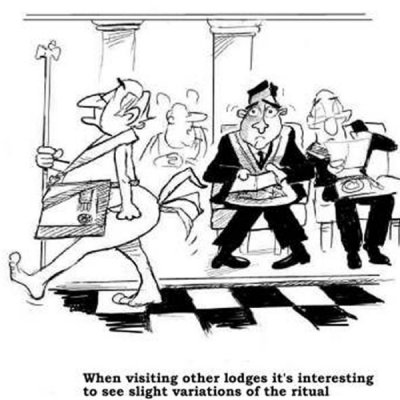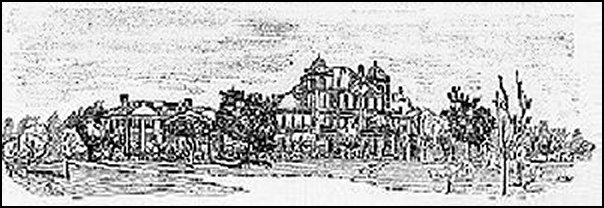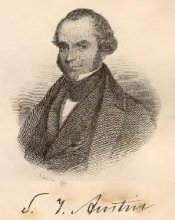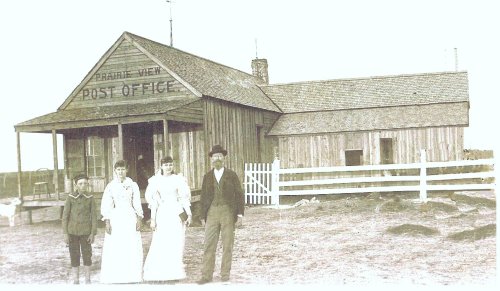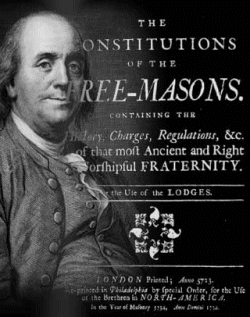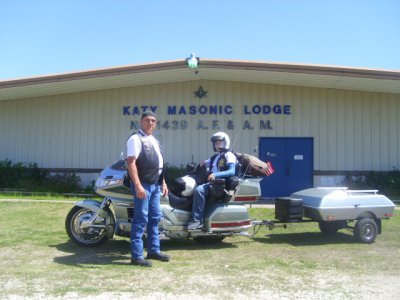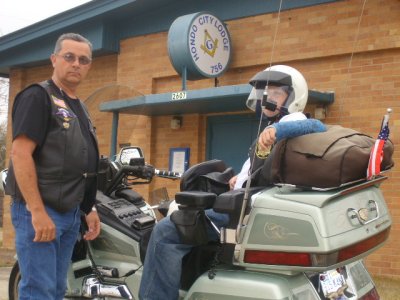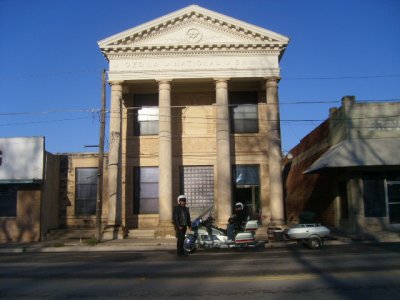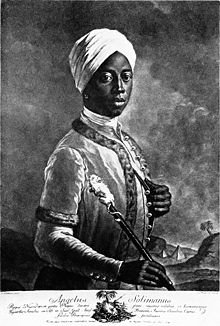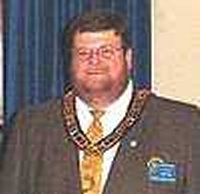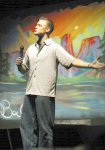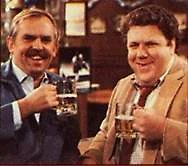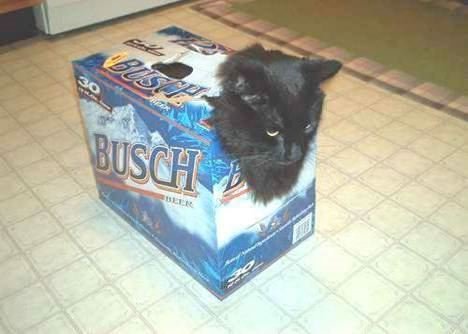
|
January 2011

Texas City Masonic Lodge No. 1118 A.F. & A.M.
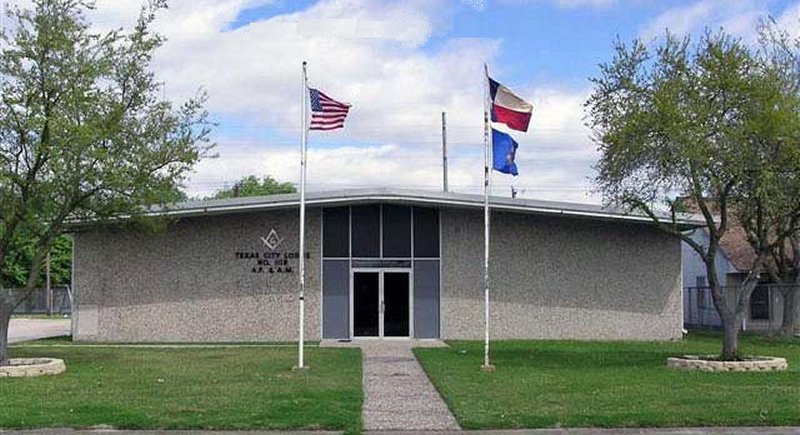 Texas City Masonic Lodge No. 1118 A.F. & A.M.. In Texas City |
|
Editor's Note; Somehow this issue grew a little bigger then usual. But, please remember, it is a magazine and you don't have to read it all at one sitting. You can come back any time and you could even download it to your computer and read it at your leisure. Corky |
|
Page II | |||||||||
|
This Small Town Texas Mason's E-Magazine is not affiliated with any state Grand Lodge or individual Blue Lodge. It was created to enlighten, educate and entertain Masons and non-Masons alike and as title suggests, it does feature a small town Texas Masonic Lodge and a story of Texas Masonic history in each issue
A very sincere effort was made to avoid using any copyrighted material, without permission or giving credit to the author, in the creation of this web site. If you discover something that is yours, without giving you due credit, please let me know and due credit will be given or the item will be replaced.
Any material in this site may be used to increase the understanding of Freemasonry.
Story tools: |
Texas City Masonic Lodge No. 1118 A.F. & A.M..
Texas Masonic History - "Twenty Minutes Beside The San Jacinto
River"
Freemasonry Around The World - Norway
Did U Know - Brother Norman Lawrence Crosby
More To The Freemasons Than Just The Handshake
The Meaning of Masonic Obligations
North State Voices: 'Secret Society' Smoothes Rough Edges
Grand Master and Sportsman - Scotland
Being A Mason About 200 Years Ago
Freemasonry Needs It's Heros - General Claire Lee Chennault
Prince Hall Masons, Austin's Colony
Constitutions of the Free-Masons
Spring Break Run - 2008 What We Learned
Angelo Soliman - The First Black Freemason?
Fate of Fairbanks Historic Masonic Temple In Limbo
Grand Lodge Of West Virginia Lawsuit Case Concluded | ||||||||
|
Page IV | ||||||
Twenty Minutes Beside The San Jacinto River Changed North America On the morning of April 21, 1836, General Antonio Lopez de Santa Anna, the President and Dictator of Mexico and his proud army were camped on the high ground beside the intersection of the San Jacinto River and Buffalo Bayou. General Santa Anna and his army were still swollen with pride after their great victory at the Alamo, where on April 11, 1836, with 1,600 troops they defeated and then massacred every one of the 183 defenders at the Alamo.
19th when he arrived at New Washington he learned that the new Texas government had already fled to Galveston. Santa Anna then set out for Anahuac via Lynchburg. He caught up with Houston’s army on April 19 near Lynch's Ferry. Believing Houston to be cornered, Santa Anna established positions on the high ground overlooking a marsh about threefourths of a mile from the Texas camp and threw up breastworks of trunks, baggage, packsaddles, and other equipment. Santa Anna decided to rest his army for a couple of days and attack the Texans army on April 22. He had received roughly 500 reinforcements under General Martín Perfecto de Cos that morning, bringing his total strength up to roughly 1,400 men.
It was about 3:30 in the afternoon, siesta time and the Mexican army was taking a well deserved rest after following General Sam Houston and his ragtag army across south Texas. General Santa Anna was in his tent, distracted by the yellow rose of Texas while his troops were taking their afternoon siesta. General Santa Anna with his 725 troops had been reinforced that morning by General Cos and his 540 troops and he felt over confident enough to made a crucial mistake. During his army's afternoon siesta, he failed to post sentries or skirmishers around his camp. The Texan army began moving quickly and silently across the highgrassy plain toward the Mexican army’s camp. Then, when they were only a few dozen yards away, they charged, shouting "Remember the Alamo!" and "Remember Goliad!," only stopping a few yards from the Mexicans to open fire. The Texans achieved complete surprise. It was a bold attack in broad daylight but its success can be attributed in good part to Santa Anna's failure to post guards during the army's siesta. Santa Anna's army primarily consisted of professional soldiers, but they were trained to fight in ranks, exchanging volleys with their opponents. The Mexicans were ill-prepared and unarmed at the time of the sudden attack. Most were asleep with their soldaderas (i.e., wives and female soldiers), some were out gathering wood, and the cavalrymen were riding bareback fetching water. General Manuel Fernández Castrillón desperately tried to mount an organized resistance, but was soon shot down and killed. His panicked troops fled, and Santa Anna's defensive line quickly collapsed. The battle lasted eighteen minutes. According to Houston's official report, the casualties were 630 Mexicans killed and 730 taken prisoner. Against this, only nine of the 910 Texans were killed or mortally wounded and thirty were wounded less seriously. Houston's ankle was shattered by a rifle ball. The Texans captured a large supply of muskets, pistols, sabers, mules, horses, provisions, clothing, tents, and $12,000 in silver.
On the General Houston spared Santa Anna's life and many historians believe that it was because both men were Freemasons, but Houston claimed it was because it would be much better for Texas to negotiate an end to the overall hostilities and force the withdrawal from Texas of Santa Anna and his remaining columns.
Compiled from Wikipedia, Texas State Library and Archives Commission and Handbook
of Texas On-Line, by John “Corky” Daut, P.M. Waller Masonic Lodge #808 AF & AM |
|
Page V |
 Order of Freemasons.
The idea and aim of Freemasonry is to influence the process of ennoblement and personal improvement by promoting humility, tolerance and compassion. Those qualities which the members master in the lodge should be practised in their daily lives. These human qualities can of course be attained and practised by others who are not freemasons, but the Order of Freemasons in an organisation where this thought has taken a practical form which enable its members to develop it through ancient rituals, and with dignity.
The Norwegian order of Freemasons does not engage itself in national or international political issues, nor does it engage itself in religious or social disputes.
The members shall show loyalty to the authority and laws of the land. They shall show respect for the Order itself and the aims of Freemasonry.
A Short History
The system was quickly adopted and became predominant in continental Europe. The first Norwegian lodge was founded on the 24th. June 1749 on Bygdøy, a peninsular on the Oslo Fjord.
What Is A Lodge
The foundation for our Masonic system is the first three degrees, which are called Johannes Freemasonry where brothers receive the titles appropriate to their degree - I. Apprentice II. Fourmymon III Master as in accordance with the art of building.
This is followed by Andrews’ masonry, which works within the IV, V and VI degrees.
The final section is Kapitlet for brothers of the VII - X degree.
A few brothers with special responsibility within the Order may receive titles like Knight and Commander of the Red Cross XI degree.
Besides the country’s 77 lodges there are numerous brother societies which work within the same framework as the lodges, but are not allowed to initiate new members.
How Does One Become A Member
Not Secret, But Closed
It is in point of fact a Christian Order, but within this framework no demands are made for adherence to special dogmas or creeds.
The Masonic learning system is closed to outsiders. Freemasonry is a school lasting a lifetime where a Mason has to work through the degrees.
The content of each degree is held closed until the freemason himself has had the opportunity to take a standpoint on questions and challenges, which are attached to each new degree.
International Cooperation
Each country’s freemasonry organisation is an independent Masonic society. There is no international organisation. Today there are about six million Freemasons throughout the world.
A humanitarian order
Regular collections are arranged to support and help our fellow mortals who might be in need of a helping hand. Annually a cause or institution is chosen for the Orders’ Common Gift, and a united collection is taken on its behalf.
As can be seen from the list of Lodges, the Norwegian Order of Freemasons is represented with lodges and brother societies in most towns and many of the other denser populated areas of Norway.
|
|
Page VI | ||||||
DR WILLIAM DODD
THE apprehending of such a man as Doctor Dodd, on a charge of forgery, was a matter of surprise and conjecture among all ranks of people. He stood high in estimation as a divine, a popular preacher and an elegant scholar. He was the promoter of many public charities, and of some others he may be said to have been the institutor. The Magdalen for reclaiming Young Women who had swerved from the Path of Virtue, the Society for the Relief of Poor Debtors, and that of the Humane Society for the Recovery of Persons apparently Drowned, owed their institution to Dr Dodd. He was patronised by the King, and more immediately by Lord Chesterfield; and his Church preferments were lucrative. It, however, appeared that his expenses outran his income, and for a supply of cash he committed a forgery on his late pupil, the Earl of Chesterfield. Another singular circumstance in the life of Dr Dodd was his publication, a few years previous to his execution, of a sermon, entitled The Frequency of Capital Punishment inconsistent with Justice, Sound Policy and Religion. This, he said, was intended to have been preached at the Chapel Royal, at St James's; but omitted on account of the absence of the Court during the author's month of waiting. The method adopted in this forgery was remarkable. He pretended that the noble lord had urgent occasion to borrow four thousand pounds, but did not choose to be his own agent, and begged that the matter might be secretly and expeditiously conducted. The Doctor employed one Lewis Robertson, a broker, to whom he presented a bond, not filled up or signed, that he might find a person who would advance the requisite sum to a young nobleman. who had lately come of age. After applying to several persons who refused the business, because they were not to be present when the bond was executed.
Lord Chesterfield was surprised, and immediately disowned it. Upon this Mr Manly went directly to Mr Fletcher to consult what steps to take. Mr Fletcher, a Mr Innes and Mr Manly went to the Guildhall, to prefer an information respecting the forgery against the broker and Dr Dodd. Mr Robertson was taken into custody, while Fletcher, Innes, Manly and two of the Lord Mayor's officers went to the house of the Doctor in Argyle Street. They opened the business, and the Doctor was very much affected. Manly told him that if he would return the money it would be the only means of saving him. He instantly returned six notes of five hundred pounds each, making three thousand pounds. He drew on his banker for five hundred pounds, the broker returned one hundred pounds, the Doctor gave a second draft on his banker for two hundred pounds and a judgment on his goods for the remaining four hundred pounds. All this was done by the Doctor in full reliance on the honour of the parties that the bond should be returned to him cancelled; but, notwithstanding this restitution, he was taken before the Lord Mayor, and charged. The Doctor declared he had no intention to defraud Lord Chesterfield or the gentleman who advanced the money.
There is nobody wishes to prosecute. I am sure my Lord Chesterfield does not want my life. I hope he will show clemency to me. Mercy should triumph over justice." Clemency, however, was denied; and the Doctor was committed to the compter, in preparation for his trial. On the 19th of February Dr Dodd was put to the bar at the Old Bailey. When the evidence was gone through, the Court called upon the Doctor for his defence, which was as follows – MY LORDS AND GENTLEMEN OF THE JURY, --- Upon the evidence which has been this day produced against me I find it very difficult to address your Lordships; there is no man in the world who has a deeper sense of the heinous nature of the crime for which I stand indicted than myself. But, my Lords, I humbly apprehend, though no lawyer, that the moral turpitude and malignancy of the crime always, both in the eye of the law and of religion, consists in the intention. I am informed, my Lords, that the Act of Parliament on this head runs perpetually in this style, with an intention to defraud. Such an intention, my Lords and gentlemen of the jury, I believe, has not been attempted to be proved upon me, and the consequences that have happened, which have appeared before you, sufficiently prove that a perfect and ample restitution has been made. I leave it, my Lords, to you, and the gentlemen of the jury, to consider that if an unhappy man ever deviates from the law of right, yet if in the single first moment of recollection he does all that he can to make full and perfect amends, what, my Lords and gentlemen of the jury, can God and man desire further? I must observe to your Lordships that though I have met with all candour in this court, yet I have been pursued with excessive cruelty: I have been prosecuted after the most express engagements, after the most solemn assurances, after the most delusive, soothing arguments of Mr Manly; I have been prosecuted with a cruelty scarcely to be paralleled. Oppressed as I am with infamy, loaded as I am with distress, sunk under this cruel prosecution, your Lordships and the gentlemen of the jury cannot think life a matter of any value to me. Continued On Page VI
|
|
Page VII | ||||||
Continued From Page V
I have yet, my Lords, ties which call upon me -- -ties which
render me desirous even to continue this miserable existence.
I have a wife, my Lords, who for twenty-seven years has
lived an unparalleled example of conjugal attachment and
fidelity, and whose behaviour during this trying scene
would draw tears of approbation, I am sure, even from the most
inhuman. My Lords, I have creditors, honest men, who
will lose much by my death. I hope, for the sake of justice
towards them, some mercy will be shown to me. If, upon
these whole, the considerations at all avail with you, my
Lords, and you gentlemen of the jury -- if, upon the most impartial
survey of matters, not the slightest intention of injury
can appear to anyone -- and I solemnly declare it was in my
power to replace it in three months -- of this I assured Mr
Robertson frequently, and had his solemn assurances that
no man should be privy to it but Mr Fletcher and himself
-- and if no injury was done to any man upon earth, I
then hope, I trust, I fully confide myself in the tenderness,
humanity and protection of my country.
The jury retired for about ten minutes and then returned
With a verdict that the prisoner was guilty; but at the
same time presented a petition humbly recommending the
Doctor to the Royal mercy. The opinion of the judges was
that he had been legally convicted.
Here he sunk down overcome with mental agony; and
some time elapsed before he was sufficiently recovered to
hear the dreadful sentence of the law, which the recorder
pronounced upon him in the following words:--
You appear to entertain a very proper sense of the enormity
of he offence which you have committed; you appear, too, in
a state of contrition of mind, and I doubt not have duly
reflected how far the dangerous tendency of the offence you
have been guilty of is increased by the influence of example,
in being committed by a person of your character, and of the
sacred function of which you area member. These sentiments
seem to be yours. I would wish to cultivate such sentiments,
but I would not wish to add to the anguish of a person in
your situation by dwelling upon it. Your application for
mercy must be made elsewhere: it would be cruel in the
Court to flatter you. There is a power of dispensing mercy,
where you may apply. Your own good sense and the contrition
you express will induce you to lessen the influence
of the example by publishing your hearty and sincere detestation
of the offence of which you are convicted; and that
you will not attempt to palliate or extenuate, which would
indeed add to the degree of the influence of a crime of this
kind being committed by a person of your character and
known abilities. I would therefore warn you against anything
of that kind.
To this Dr Dodd replied: "Lord Jesus receive my soul."
Great exertions were now made to save Dr Dodd: the
newspapers were filled with letters and paragraphs in his
favour; individuals of all ranks exerted themselves on his
behalf; parish officers went in mourning from house to
house to procure subscriptions to a petition to the King;
and this petition, which, with the names, filled twenty-three
sheets of parchment, was actually presented. Even the
Lord Mayor and common council went in a body to St
James's to solicit mercy for the convict.
As clemency, however, had been denied to the unfortunate
Perreaus, it was deemed unadvisable to extend it to Dr Dodd.
This unhappy clergyman was attended to the place of execution,
in a mourning-coach, by the Rev. Mr Willette, ordinary
of Newgate, and the Rev. Mr Dobey.
Another criminal, named John Harris, was executed at the same
time. Just before the parties were turned off the Doctor whispered
to the executioner, and it was observed that the man had no
sooner driven away the cart than he ran immediately under the
gibbet and took hold of the Doctor's legs, as if to steady the
body, and the unhappy man appeared to die without pain.
| ||||||
|
Page VIII | |
From The News & Star
Secret handshakes, initiations, mysterious gestures, rolled-up trouser legs, white gloves and aprons – these are many of the connotations of Freemasonry in the minds of non-members across the world.
Mr Thompson feels that myths and misunderstandings unfairly surround the organisation but admits they have not done enough to dispel them over the years .
So as I pull up a seat in the Sands café at the Sands Centre – just hours before 600 members of the Cumbria and Westmorland Freemasons descend on the venue for an annual meeting – he sets about trying to put this right.
“People think it is a huge secret and it isn't. If someone wants to ask me about it, I will tell them.”
Freemasonry can be traced back to 1646. Stonemasons used signs and words to indicate their levels of skill to other masons – apprentice, fellowcraft or master mason. These words are still used today to recognise the status of a Freemason.
Mr Thompson explained: “During World War Two Freemasons were persecuted by the Nazis so members started to keep things confidential in order to protect themselves.
“Over the years preconceptions have built up in the minds of people and we haven't helped ourselves by keeping quiet.
“Yes there is a hand shake and yes there is an initiation. There are three stages which lead to a member becoming a master mason.”
Mr Thompson doesn't offer to teach me the handshake but does explain its origins.
“In the early days of freemasonry, in the Middle Ages, most people were illiterate. After someone had served their time as a master craftsman they would move on to try to seek employment. The person offering the job would ask them to prove their status and this is where the signs and tokens came into it.
“These days the handshake is used purely and simply as a greeting, shared between members. It should not be used for any other reason.”
Mr Thompson, 63, became leader of all Freemasons across the county after taking up the post of Provincial Grand Master in 2008. He is clearly regarded as a important figure, but it is difficult to interpret this status without having a foot in the door. To observe the way the other Freemasons buzz around him, however, shows the high regard in which he is held.
A friendly man with a sweep of white hair, he talks with pride about the organisation that has played a huge part in his life. For the retired deputy governor of Haverigg Prison, the way into Freemasonry wasn't paved with family connections.
Norman Thompson was persuaded to join up by his mother.
“I remember the day she said to me that I should look into it. Her reference was that she had known a few members who she regarded as upstanding chaps.
“In 1970 I decided to find out more and made some inquiries. But I waited six years before I joined in Millom, aged 29.”
It was through his love of ballroom dancing that information officer Peter Clark,from Maryport, joined up.
Mr Clark, a teacher, added: “I used to take dance classes at the Masonic hall in Aspatria. I got to know a few people and they suggested I join. Three years later, in 1991, I did and I have enjoyed every minute of it. It is a community, a family. People go out of their way to speak to you and understand you. Freemasonry is something that is a constant in my life, something that I can rely on. And we have a fantastic time together.”
Mr Thompson added: “Freemasonry is an opportunity for people to make themselves better individuals and demonstrate to others that they are considerate, kind and charitable by word and deed to those less fortunate than themselves irrespective of whether or not they are Freemasons.”
There are 3,000 Masons throughout Cumbria and Westmorland and 82 halls across the county – including one in every town.
Despite a considerably large following, Mr Thompson said that numbers have dwindled over recent years.
“The numbers are not as good as they used to be, but this is the same for the Rotary and Round Table clubs. Some people are just not as committed to helping others. But encouragingly there seems to be a new impetus of young people.”
He added that a recent meeting saw 60 to 70 new members sign up. Male members.
Can women join? “No.”
“Traditionally Freemasonry has always been restricted to men. Women have their own group. It is a separate organisation and has nothing to do with the Grand Lodge.
“Women are involved in many ways,” adds another member.
“They do catering for functions and get involved with events along with children.”
Mr Thompson adds: “The minimum age is 21 but some can join at 18. And you can be a member for your whole life. We have members who have 50 to 60 years of service.
“Members come from all walks of life.”
But he adds: “There are two things we do not talk about – religion and politics.
“We are not a religious organisation, contrary to what some people believe.
“There is a misconception that we have formed our own type of religion, which is totally untrue.”
He added that there are no religious restrictions on members: “Freemasons come from a cross section of religious backgrounds including Anglican, Roman Catholic and Muslim. We ask people 'do you believe in a supreme being?' As long as the answer is yes, it is up to the individual as to who this is.”
Freemasonry also does not have any political affiliations.
Keen to tackle all misunderstandings, Mr Thompson added: “Another criticism people level at us is 'you only look after your own'. Yes that was the case in the past. When there was no welfare state of NHS, we looked after our members. But now, we pride ourselves on helping others.”
Over the past 25 years the Freemasons Grand Charity has donated £8,126,929 to causes up and down the country. The Cumbria and Westmorland branch or province alone gave away more than £77,000 in this time in grants to the Eden Valley Hospice and Hospice at Home across the county. On Friday, Mr Thompson presented a cheque for £5,000 to the Cumbrian branch of SAFFA (Soldiers, Sailors, Airmen and Families Association).
But he said much of this charity work goes unrecognised.
“When people don't understand something or have no information, that is when you get misconceptions. That is what we have suffered from as Freemasons.”
He added: “I spoke to two women the other day and they asked me about some of the stereotypes. I told them the truth and they just said that they did not believe me.”
As part of a push to engage more with local people, Masonic halls across the country swung open their doors recently. Hundreds visited their local meeting points to see the regalia and learn about the Freemasons.
“We want people to see what we do and what we are all about. We are not a secret society. If we were, would we be holding a mass meeting at the Sands Centre? No. We would be underground somewhere. And I would not be speaking to the press.”
|
|
Page IX | |
By R.V. Harris
Past Grand Master, P Gd Secty, Nova Scotia The obligation is the turning point of every degree; it makes a man an E.A.; a F.C.; a M.M. As early as 1738, objection was taken to an oath of secrecy taken on the Holy Bible and a few years later in 1757, the Synod of Seceders of Scotland condemned the Masonic Order on five grounds, namely; that it is on oath of secrecy; secondly that such an oath is considered by Freemasons as paramount to the laws of the land; thirdly, that such oaths are administered before the secrets of Freemasonry are communicated; fourthly that they are accompanied by certain objectionable ceremonies, and lastly that to each is attached a penalty which is ridiculous and absurd. Is there anything in these criticisms? What is an oath or obligation? The word “obligation” comes from a Latin word obligatio – a binding to, a tie. The same root lig is to be found in the words, ligament and religion. An obligation is more than an oath, it is more than a vow, it combines both. An obligation is a promise made solemnly and under the penalty or sanction of one's religious belief. Let us now consider the five objections made: First, “Freemasons require oaths of secrecy”
Oaths are as old as mankind and were used by pagans and barbarians to secure certainty in evidence or the performance of a pledge. Oaths were common in Old Testament times. In early England from King Alfred to Edward I, an oath of allegiance to the King was administered to every freeman every year. The King himself was sworn into office and afterwards all officers of the Crown and all judges and jurors. The world is held together today by oaths and obligations. All rulers and administrators, legislators and executive officers of high and low degree in State and municipalities, and in every phase of human society are bound by their oaths of office. Without oaths the world would lapse into disorder, confusion and anarchy. In civil society we find that ties and obligations bind all men together. We speak of the marriage bond or tie; all fraternal orders, good, bad and indifferent, are built on formal obligations; as are all religious orders and societies. Baptism is a form of obligation and so are many Church ceremonies. If we ceased to administer oaths or obligations, society itself would be dissolved and, of course, all justice and right dealing. The obligation in the Old Charges was very brief; “There are several words and signs of a Freemason to be revealed to you which as you will answer before God at the great and terrible Day of Judgment, you are to keep secret and not to reveal the same to any in the hearing of any person whatsoever but to the Masters and fellows of the said Society of Freemasons. So help me God.” A Masonic obligation was originally taken “By the holy contents of this Book and Holy Church,” or “So help me God and the holy contents of this Book.” Second; Are oaths “placed higher by Freemasons than the law of the land?” To us, as Freemasons this is an absurd charge, for the observance of law and order and the duty of patriotism are primary duties imposed on all freemasons. Freemasonry is organized patriotism, standing for just laws, loyalty and cooperation. There is no room in Freemasonry for treason or disloyalty. Freemasonry is the enemy of communism and anarchy; does not tolerate the undermining of public virtue or social stability; and has no use for the man who plots behind the flag which protects him. “In the state you are to be a quiet and peaceable citizen, true to your government and j just to your country. You are not to countenance disloyalty or rebellion, but patiently submit to legal authority and conform with cheerfulness to the government of the country in which you live.” A Masonic lodge is a guarantee of good order, and strength to the community, it stands for morality and law and for law-abiding citizenship. There are today thousands of Freemasons in positions of trust and responsibility in the state. No rebellion was ever plotted in a Masonic lodge for the Masonic obligation binds us to uprightness and fair dealing and there is not even a line or a syllable to support the charge or objection made to the contrary. Third: “That the oath is exacted before the secrets of Freemasonry are made known.” This too is equally absurd, for it is obvious that if the secrets were made known first, the candidate would have an option as to whether he would take it. If an oath of secrecy is itself proper then the proper time for such an oath is before revelation and not after. If you wish to tell your friend a secret, you first exact a promise from him not to tell. The person to be bound knows what its general import is, whether an oath of allegiance to the King, or a declaration that he will not reveal the means of recognition such as the words, grips, and tokens, and he is assured that there is nothing therein contained which will conflict with his duty to God, his country, his neighbour or himself. Fourth: "That Masonic oaths are accompanied by certain ceremonies;” The fourth objection is that Masonic oaths are accompanied by certain ceremonies; presumably the placing of one's hand on the Holy Bible and kissing it three times. We all know that all oaths in all countries are accompanied by peculiar rites, obviously to increase the solemnity of the occasion. An ancient Hebrew placed his hand on the thigh of the person to whom the promise was given. Abraham said to King of Sodom – “I have lifted up my hand unto the Lord, that I will not take anything that is thine.” The Greeks placed their hands on the horns of the altar or touched the sacrificial fire, or extended the right hand to heaven and swore by the earth, the sea and the stars. The Romans laid their hands on the hand of him to whom a promise was given. In solemn covenants, oaths were accompanied by sacrifice and a portion of the hair of the victim's head was given to all witnesses. The ancient Germans solemnized the occasion by placing their hands on holy relics. A soldier placed his hand on his country's standard. In China to break a saucer or extinguish a light is regarded as imposing greater solemnity. The Jewish oath in court today is given with the hat on, followed by kissing the Old Testament. In English Courts, we have, since A.D. 528, held up the hand or kissed the Bible or placed the right hand on the Bible. The ancient Church approved of this ceremony as far back as the Council of Nice 321 A.D. Fith: "The penalties are absurd and ridiculous" The last objection, namely that the penalties are absurd and ridiculous is perhaps the most difficult to answer. The criticism is made that not only are these penalties ridiculous and absurd but they are terrorizing and shocking. They are however, not to be taken literally, although Kipling records an instance where a Lascar crew carried out the penalty of the M.M. degree on one of their number who violated it! Some Freemasons who are timid and uninstructed may be disposed to accept this criticism. Freemasonry is described as “the gentle Craft.” Its teachings are brotherly love, relief, truth, Love of God, charity, immortality, sympathy and mutual help. Its penalties would naturally shock their timid minds. They come with some surprise and consternation, and there has been some agitation to simplify and modernize there obligations and their penalties. It must be admitted that they are archaic and obsolete and altogether unintelligible to modern minds and so much misunderstood. It is contended that Lodges are schools in which men may learn the way of right living and high thinking; that Freemasonry exemplifies the spirit of humanitarianism, kindliness and charity and that vengeance and retaliation have no place in Freemasonry. It is argued that simpler penalties would be more sensible and more solemn and binding. The fact is that these penalties were in everyday life in the 17th and 18th centuries; the 1600's and 1700's. The English Court of Admiralty had jurisdiction from High water mark over the seven seas, and that above high water mark other Courts exercised their jurisdiction. The code of Henry VI, therefore, directed that the punishments of Admiralty should be inflicted at low water mark. They were terrible and barbarous; the prisoners hands and feet were tied; his throat cut; his tongue pulled out and his body thrown into the sea or buried at low water mark. The Laws of the Friesians or Low Germans directed that for robbing a pagan temple, the criminal should be dragged to the sea shore and buried in the sands at low water mark. By the Scandinavian code a creditor might subject his delinquent debtor to the penalty of having flesh torn from his breast and fed to the birds of prey; and convicts were adjudged to have their heart cut out, and you have the same penalty referred to in Shakespeare's “Merchant of Venice” for failure to pay a debt. The oldest codes prescribed exposure of the body of a criminal to the fowls of the air; or that it should be burnt to ashes and the ashes scattered to the four winds of Heaven. In the Roman code perjury was punished by the tongue being torn out by the roots. In some codes a halter or cord about the neck was used symbolically to denote that the accused was worthy of decapitation or hanging or servitude or slavery. In England, until recent centuries punishments were horrible and inhuman. As late as the 17th century the punishments for treason and all crimes were absurd and severe. Until 1827, the penalty for theft in England and all Canadian colonies was hanging and there are numerous instances of this penalty for very petty thefts within the past one hundred and fifty years. Fortunately humanity has modified our penal methods; the punishment now fits the crime and fits as well the criminal. Now Freemasonry adopted the present obsecrations and penalties at a time when they were familiar to everyone and regarded as proper and reasonable. No Freemason in his sane senses entertains the view that he may or is bound to take the law into his own hands and punish a brother Mason for violation of oath in the manner of the penalty of his obligation. We are all bound to observe the present laws of society, not those which have been repealed. The only Masonic penalty is suspension or expulsion; the scorn and detestation of the Craft.
| |
|
Page X |
An obsecration was, and is, part of all ancient and modern oaths. The Romans said; "May the gods destroy me!" or "May I die", for the offence of false swearing was not against man but against the gods, and false swearing was to be punished by the gods and not by man. "May the gods destroy me" means "I am so convinced of the truth of what I say that I am willing to be destroyed by the gods if what I say is untrue." There was no notion or agreement to submit to death at the hands of his fellows. When a Mason adds a penalty to his obligations he declares that he is worthy of such a penalty, if he speaks untruly, or that such a punishment would be just and proper. "May I die if this be not true, or if I keep not my vow" said the ancient. Not "may any man put me to death"! In Masonic penalties there is an invocation of God's vengeance should the maker of the obligation violate it; and not a submission to human punishment. Man's vengeance is confined to contempt and infamy which the perjury incurs. The use of a "sharp instrument" in our ceremonies is an intimation that a punishment awaits all who violate their obligations, a reminder that the violation of any duty brings its own penalty; the way of the transgressor is hard; "The wages of sin is death." Masonic penalties are symbolical as are all parts of Masonic ceremonies. Again obligations with archaic phrases and penalties link us up with the long past. This modern age is too hasty and too often irreverent of the past and of historical continuity. The Church does not discard ancient practices merely because they are old. The glory of the Church is its many links with the past; they are evidence of continuity and authenticity. Again, and most important, these penalties are part of a universal system of penalties in Freemasonry and the basis of unchangeable means of recognition everywhere throughout the Masonic world. Our obligations bind every member to the society and its aims and objects, make him feel his brotherhood with other members of the lodge and the Freemasonry throughout the world and with all who have taken the same obligations. Again our obligations require all brethren to adopt a certain course of action towards others who are brethren; our obedience to a summons; our duty to help aid and assist others; to refrain from injuring others; to refrain from Masonic intercourse with outsiders, and with irregular Freemasons and to discountenance all irregularities and immoralities. The ideal Mason is one whose word is his bond; who can be depended upon to do what he undertakes to do; to be what he ought to be; who recognizes his obligations, not only to his fellows in Freemasonry, but to his brother man as well. To take a Masonic obligation is to declare allegiance to all Masonic principles, so that he may be accepted as a responsible member of the family of Masons. I accept you, you accept me, because we have knelt at the same altar, taken the same obligations, and are bound to the same service. Let the world rave and criticize as it will; it can never tear down the structure we have built which we call Brotherhood.
Courtesy of Bro C. Plante |
|
Page XI |
W. Bro. Dwight D. Seals
I received some very nice e mail replies to this past Sunday's DUK concerning the old Past Master and the young Mason. From comments like "ya gotta love the wisdom of the old Past Masters" to "I felt the pain of the young blood as I too have felt out of place or not fit in", comments hit every realm of possibility. Let's turn the page though and look at another side by letting me relate a story I saw with my own eyes about 15 years ago, standing not two feet away from me. This still sours me and maybe it shouldn't, but then, yes it should. I have no doubt I will get some responses both good and bad. This is a true story, but I won't mention the Lodge as I do not want to embarrass anyone here and members of the Lodge are on this list. If you have any good Masonic stories you would like to share with our DUK list of 300 + Masons throughout the world, please feel free to send me an e mail.
Did U Know?
Years ago when I was sitting as Worshipful Master, I attended the annual inspection of a very good friend who was sitting as Worshipful Master that same year. I honestly don't remember what degree he was being inspected in now. There were quite a few Brethren standing in line outside the Lodge room waiting to sign the register. It was an excellent turnout with nearly 100 in attendance. Now mind you, I have never went to a Lodge inspection without at least a sports jacket and tie, and generally a business suit and tie, but that doesn't mean everyone does. A young man of maybe 25 or 26 years old and I were standing in line talking to each other while waiting to sign in. He was a member of this particular Lodge and had been for a couple years, but hadn't had the chance to attend meetings because he worked second shift. He told me he had called in sick this evening because he just wanted to go to see his first Lodge inspection. As we got closer to the sign in book, the sitting Senior Warden walked up to this young man and asked if he could talk to him. The young Brother acknowledged him, shook my hand and said it was nice talking to me and walked away with the Senior Warden. I thought it strange that after talking to the Senior Warden, the young Mason walked downstairs. The Senior Warden was walking past me and I stopped him and asked if everything was alright. As long as I live, these words will forever be stuck in my mind. He said, "oh yea, nothing wrong, I just asked the Brother to go home and put on a tie as it is standard procedure to have a suit and tie at our inspection". I said, "you can't be serious, you sent him home because he didn't have a tie on". The Senior Warden said "absolutely, now if you will excuse me, I have some things I need to get done before we open". I remember the young Brother had a nice pair of dress pants and a nice dress shirt, no tie and no suit coat or sports jacket. I didn't give it any thought until the Senior Warden told me he sent him home to get a tie.
Brethren, when I got in Lodge and found a seat, I saved a seat next to me thinking he would come back and not knowing where he lived, he might be running late and he would have somewhere to sit when he got back. I kept an eye out for that young man the entire night and I had an empty seat next to me all night. The Lodge passed their inspection with flying colors. The next day I called my friend the Worshipful Master and asked him if he would have lunch with me that day. Over lunch, I relayed the story which I just told you. He was very upset himself and said he would speak to the Senior Warden. He asked me if I remembered the Brother's name, as he would go visit him and apologize. I said unfortunately, no I didn't. Well, neither did the Senior Warden, he found out when he talked to him later that afternoon.
I wonder if the young Mason without a tie, coming to his first Lodge inspection, ever got an apology from anyone? I wonder if the young Mason has ever stepped foot inside his Lodge since that evening fifteen years ago? I wonder what this young Mason is telling his family and friends about the Masonic fraternity. More than anything, I wonder if he is still paying his dues? I wonder what he thinks if and when he thinks back to the Entered Apprentice lecture about the internal and not the external qualifications of a Mason? Should a Mason wear a tie to Lodge inspection, absolutely, if he has one or if he knows that is the custom. Do we tell everything we should to our fellow Brethren or do we just expect Brethren to know it? I wonder if maybe a Lodge shouldn't keep a few ties in the preparation room for just such occasions?
In my 27 years of being a Mason, this night sticks out in my mind and in my crawl more than anything else, and probably always will. I will leave you with this though and I do welcome your responses, good or bad. There used to be a television commercial which said " you only have one chance to make a first impression". What kind of impression was made with the young Mason I just told you about? What kind of impression was left upon the young Mason mentioned in the DUK I sent on Sunday morning with the old Past Master. Which Mason are you? Which Lodge is yours? How would you handle both of these scenarios as an individual Mason and as a Lodge? If you would like to make for a very lively and active discussion at your Lodge, let me suggest reading both of the last two DUK's at your next Lodge meeting and see what your Brethren have to say about them.
This Masonic Did U Know list is strictly volunteer. If you received this message in error or you wish to be removed, please reply to the author only and you will be removed, no questions asked. If you know of a Brother who would like to be added to our list, reply to author with the Brother's e mail address and it will be added immediately.
May We Meet Upon The _|_ Act By The ! And Part Upon The |_ |
|
Page XII | ||
Reprinted From The Rural Lodge Newsletter Quincy, Massachusetts
"First Grand Master Mason of Scotland, elected in 1736 when the Grand Lodge of Scotland was formed, an office he held for one year only. A good deal of discussion has been had pro and con as to the validity of two old documents known as the Saint Clair Charters, one dated about 1601 and one 1628, in which documents the statement is made that the Operative Masons of Scotland had conferred upon the family of Saint Clair of Roslin the honor of being recognized as Patron and Protector of the Craft. In 1736 when a first Grand Master was to be chosen for the Scottish Grand Lodge, William Saint Clair was made a Freemason in the Lodge Canongate Kilwinning and he also formally resigned all claims to be Patron and Protector of the Freemasons in Scotland on November 30 of the same year at a meeting held at Edinburgh. William Saint Clair died in 1778."
In November 1736 St Clair was elected first Grand Master of the Grand Lodge of Scotland. His appointment proved something of a surprise since it was only in June of that year that St Clair had been admitted a member of Canongate Kilwinning lodge. Lord Home was generally expected to become the first Grand Master, having been endorsed only five days before the election by one of the major organizing bodies, St Mary's Chapel lodge. However, on 22 November St Clair advanced with remarkable alacrity through a series of offices to qualify as a master. The subsequent election meeting was dramatic Lord Home was not in attendance and St Clair renounced and discharged his purported hereditary grand mastership, whereupon he was appointed Grand Master. He maintained a lifelong involvement in Scottish freemasonry. William St Clair of Roslin (1700-1778), archer and golfer, was born at Roslin Castle, Roslin, in Edinburghshire, Scotland, one of seven children of Alexander St Clair of Roslin (1672-1706) and Jean Sempill, daughter of Robert, seventh Lord Semple. About 1723 he married Cordelia, daughter of Sir George Wishart of Cliftonhall, near Edinburgh; they had three sons and five daughters, all of whom, except one daughter, Sarah, died young. Royal Company of Archers St Clair's golfing successes came later in life, the first evidence of his playing the game dating from 1751. He was the golfing champion, and thereby captain, of the Honourable Company of the Edinburgh Golfers in 1761, 1766, and 1771, and of the Gentleman Golfers of Fife (now the Royal and Ancient Golf Club of St Andrews) in 1764, 1766, and 1768. Until 1764 the champion was identified by the number of 'holes up' he was against other company members. St Clair's round in 1764 at St Andrews was the first medal, or stroke, round ever recorded in golf, calculated by the total number of strokes taken in the round. Over the course, then comprising twenty-two holes, his total of 121 strokes was a wonderful score with the clubs and balls of the time. In respect of his achievement, the very next day the number of holes was reduced to eighteen and that number was subsequently adopted from St Andrews as the standard for courses worldwide.
From 1766 until his death St Clair led the Royal Company of Archers as praesis of the council. At the introduction of each new member he announced, without justification, that the company had the right to form a bodyguard whenever the monarch visited Edinburgh. This claim proved the basis for the company's becoming the royal bodyguard during George IV's visit to Edinburgh in 1822 and on subsequent royal engagements. In later life St Clair was described by Sir Walter Scott as considerably above 6 feet, broad shouldered, with dark grey locks and handsome if somewhat exaggerated features. He died at his home at Liberton Wynd, Edinburgh, on 4 January 1778, and was buried in Edinburgh. The eulogy at his funeral by Sir William Forbes,
| ||
|
Page XIII | ||||||
|
by Blake Bowden
Chaire Lee Chennault was born September 6, 1890, at Commerce, Texas. He would grow up in Northeast Louisiana. He would die in New Orleans on July 27, 1958. At age 19, he became the first principal of the Central High School, a six-room schoolhouse in the Central Community in Franklin Parish at a salary of $100.00 a month. He was also the school's football coach and discipline authority. Each afternoon to maintain a good physical condition, after football practice, he trotted to Delhi, LA 12 miles or to Winnsboro, LA 15 miles. He had formerly taught at Start Elementary School for one year. Inside the school he was Mr. Chennault. Outside the school, with the boys and girls, he was “Claire Lee.”
He selected the players who would be on the football team and began practice. Before the first ball was kicked, they were given this order; “When you walk out on that field, you are going to learn to play football in order to win games. Remember that!” The training the boys received that year and the spirit instilled in them to win carried them through four victorious years on the gridiron, with an undefeated record. The two triumphs they still talk about were the games played against Vicksbury, Mississippi and Monroe, LA. Claire Lee not only coached the football team; he played on it regularly. After the games, he danced with the girls. In 1911 on Christmas Eve he married Miss Nell Thompson. Claire Lee attended Louisiana State University for three years, but decided to complete his education at Northwestern State University at Natchitoches, LA.
He was commissioned a first lieutenant of the infantry in the U.S. Army at the age of 27. He promptly transferred to the aviation section of the Signal Corps. He wanted to be a pilot.
He took his Blue Lodge Degrees in League City Lodge No. 1053 in League City, Texas. He was initiated on June 6, 1921, passed on October 6, 1921, and raised to the sublime degree of Master Mason, May 24, 1926.
In the 1930's he developed a reputation as a “Premier Pursuit Pilot.” He retired from the U.S. Army in 1937 to become a military advisor to Chiang Kai-shek in China. He had been sent to Air Corps Tactical School. His ideas concerning Pursuit Plane employment evolved from a great deal of personal experience, but the Air Corps was in the process of making a decisive shift in favor of prolonged bombardment of strategic targets from the air at high altitudes.
The P-40 was not as powerful as the Japanese Zero, which amazingly gave it a turning advantage. It could make a tighter circle than the Zero, which brought the Zero under its guns. In the short period of eight months (December 1941 through July 1942), the American Voluntary Group scored 288 kills with a loss of only 23 American pilots.
During the decade after the war Chennault organized the Chinese Air Transport Company which worked closely with the American Central Intelligence Agency. Eventually this became known as “Air America.”
On June 27, 1948, Claire Lee Chennault took the Scottish Rite Degrees. He received the 14th in Yangtze, China, Lodge of Perfection; the 18th degree in Shanghai, China, Chapter of Rose Croix; the 30th degree in Cathay, China, Council of Kadosh; and the 32nd degree in the Orient of China Consistory. The Shanghai Bodies went into exile in the Philippines Islands at Manila.
On October 31, 1957, while living in Manila, Claire Lee Chennault was nominated to receive the Investiture of the Knight Commander of the Court of Honor. A silver coin bearing his visage was minted. The honor was conferred in the Scottish Rite Bodies in the Philippines in Manila. He was a member of Islam Shrine Temple of San Francisco, California.
Yes, Free Masonry needs its Masonic heroes. Claire Lee Chennault was such a man. He was fighting for freedom for four years before most Americans were ready to get involved in the war in the Pacific. Claire Lee Chennault – A Mason's Mason. He is buried in the National Cemetery at Arlington, Virginia.
In 1946 he married a Chinese “Anna,” who wrote two books about him- “A Thousand Springs” and “Chennault And The Flying Tigers.” His papers are at Stanford University. His memoirs are titled “The Way of a Fighter” by G.P. Putman. The American Press idolized him. When John Wayne portrayed him in a movie, he passed from history to mythology. Ultimately, he was raised to the rank of Major General –Three Stars. He died of lung cancer on July 27, 1958 at the age of 68.
Source: Bro. D.L. Aldridge, P.M.
This article was originally published in forum thread: Freemasonry Needs It's Heros started by Blake Bowden
|
|
Page XIV | |
|
Congratulations to a member of Lodge Tawhiri (currently
resident in Australia), Bro Greg Brown, upon being appointed a
Justice of the Peace. Greg flew back to Hamilton for the swearing-in
ceremony.
Alf Tattersall, at the grand old age of 94, has been installed
into the chair of Ye Olde Bargate Lodge No. 5296, which meets at
Albion Place, Southampton. This was the first time he had been a
Master, as he came into Freemasonry late in life, at the age of 88.
Paul Revere was an American who took part in the revolution
against England. Not very well-known is the fact that he was once
captured by the British forces. When it was discovered he was a
Freemason, the captain interrogating him (who was also a Freemason),
let Paul Revere go free.
Prayer of an American Freemason. "Oh, Lord, Bless this
Glorious Order; bless its friends; yea, bless its enemies (and make
their hearts as soft as their heads!). Amen."
BELOW: A cartoon seen in a book called"The Festive Freemason" written and
illustrated by an English Mason, Wor.Bro. Steve Chadburn
The origin of the word Freemasons
The first-known use of the word 'Freemasons' occurs in a City
of London Letter-book of 9 August 1376. The words 'Masons' and
'Freemasons' were interchangeable during the 15th and 16th
centuries, and Freemasons were generally meant to denote hewers
or setters of freestone (the word 'Masons' being used to embrace
all stoneworkers). Ashmole in his diary in 1686 wrote that he was
made a Free Mason and referred to the "Fellowship of Free
Masons". James Anderson when writing his 1723 Constitutions
did not use the single word—'Freemasons'—once.
Whatever the reasons, the 1723 Constitutions contain approximately 126
references to 'Masons', twelve to 'Free Masons', ten to 'Free and Accepted
Masons', nine to 'Free-Masons', one to 'Accepted Free Masons', and none to
'Freemasons'.
And such is the tenacity of tradition that to this day the most of the
Constitutions are addressed to 'Free and Accepted Masons' and not to
'Accepted Freemasons'.
Skilled workers have guarded their trade secrets
through the centuries, and having a member of a
group as a sentry to keep out any intruders was an
established custom in medieval times. Sadly, they
were not always successful, and industrial espionage
is today almost a respected occupation.
These sentries are referred to in various Masonic
documents as "Outerguards", "Junior Entered
Apprentices", "doorkeepers", "guarders" and
"janitors". After the word "Tyler" first appeared in
print, these other titles continued in use for year
Stone being laid at Freedom Towers
Freemasons have been laying cornerstones for at least the last
300 years. In the United States, for instance, Freemasons dedicated
the cornerstones that founded Washington, DC: the White House,
the US Capitol building, and even the city itself.
Soon, a 20-ton granite cornerstone for the Freedom Tower which is being
built at Ground Zero will be ceremonially set into place. It was originally laid
a few years ago, but had to be temporarily removed as construction plans
were altered, and now sits in the quarry yard in Long Island.
When it is relaid, the ceremony will again be done by Freemasons.
A letter from an overseas member
Several brethren overseas enjoy reading copies of this newsletter.
Here is a message received a few weeks ago from London:
Dear Reg, Just a brief email to say that as an old member living abroad
for the past 40 years, how I enjoy seeing the continued success of Lodge
Tawhiri, my mother lodge. The Master has obviously had a "Good" year.
My Father, Harry Searle, was responsible for initiating me into the craft,
after sending me into the collapsed ruins of the Frankton Temple after the
devastating tornado, way back in 1946.
I was the only one small enough to climb in and bring out regalia and
photographs!
Kindly convey fraternal greetings to all members, especially to Athol Thorpe. Keep up the good work! Graham Searle.
|
|
Page XV | |
In either case, the Brother is challenged by the realization that there is no simple answer which he can rattle off "from the top of his head," because the questioner is really asking him for a comprehensive explanation about what organized Freemasonry is, what its principles and purposes are, what programs it is engaged in, how it carries them out, and what satisfactions the individual Mason derives from his Masonic membership. Some of these considerations arouse the fraternal doubt that "you can't tell that," or "that's secret," so that the Brother's reply is marked by hesitation or reluctance to explain. Puzzled by the difficulty of knowing what facets of the vast subject of Freemasonry the questioner is really inquiring about, the Mason "just doesn't know where to begin, " and too often may avoid a simple statement of facts. He isn't sure of what to say. Or, knowing that his questioner is a "practical man of affairs" who measures outcomes quantitatively, in materialistic terms, he realizes that Freemasonry's reputation cannot be explained by charts, statistics, or financial statements, because the Fraternity's real worth can be expressed only in spiritual terms, and that is rather difficult to explain to the uninitiated. Masonic terminology, the most comfortable words with which to reply, seems inadequate or out of place. Masonic "secrecy" gets in the way. Embarrassment is probably the commonest cause of a Brother's difficulty in replying to the question. He is embarrassed because he realizes that he doesn't really know enough about the Fraternity to give a good simple reply. He knows that there is much more Masonic activity going on in other lodges all over the country and throughout the world, but he has never taken the time to experience some of it or to read about it with real interest. He hasn't given much thought to the subject. He never expected to be asked such a question by a non-Mason outside the lodge. Even though he has experienced Masonry, he has never tried to express in words just what Freemasonry means to himself. A well-informed Brother, therefore, will prepare himself for the possibility of being asked such a question. Even though no one ever asks the question, he will have the confidence of knowing what Freemasonry means, especially to himself. First of all, he will determine to give a Masonic answer, one which asserts the real nature of the Fraternity as a spiritual force, as "a way of life" which seeks to improve men morally and spiritually, by associating with other idealistic men who want to improve the quality of life around them by means of a brotherhood which emphasizes the Fatherhood of God. In an age which derides ideals, absolutes, the concepts of law and order, and advocates relativism instead of standards of excellence, which angrily demands rights instead of responsibility, and which preaches a nihilistic doctrine of individualism (doing your own thing), Masons find it difficult to explain the Fraternity's idealism and its charitable and educational purposes. But it must be done. A Mason must give a Masonic answer to the question, "What are the Masons." There are really so few "secrets" which a Mason is required to keep, and so much that he should be proud to proclaim to others, that his principal concern in answering questions is probably the doubt that he can give an adequate Masonic reply. The esoteric parts of the ritual work, the grips and pass-words of the three degrees, these are really the only "secrets" which should be kept inviolate. Because it is impossible to communicate to the uninitiated the joys and satisfactions of brotherhood experienced in "the labors of the lodge," this too becomes a secret because it is inexpressible. But there is so much that can be told about Freemasonry, about the particular lodge, about the individual Mason, that the real problem in answering the question, "What do the Masons do?" is to say only enough to satisfy the questioner without boring or distracting him. He can point out that Freemasonry is an educational organization. By means of the ritualistic ceremonies and other educational programs, Masons learn and teach the truths of morality, justice, patriotism, and the necessity of brotherly love to achieve those universal ideals. Reverence for the Great Architect is inculcated because men are brothers only if they are related to God as the, sons of the Creator Father. He can explain that Masonic meetings, while resembling the meetings of any organized society, have a distinctly Masonic character.. They are opened and closed with prayer. They are patriotic because the nation's flag is kept in an honored place in the lodge and properly saluted with the pledge of allegiance. They are opened and closed with Masonic ceremonies to remind the members of the principal purposes of the Fraternity, which are to develop brotherly love and respect for truth, not the truths of scientific facts or history, but the truths which guide a man to live happily and harmoniously with his fellow man. For that reason Masonic meetings do not permit the introduction of discussions about sectarian religious differences or partisan political opinions. A Masonic lodge, if it is working seriously, teaches its members the principles involved in attaining a universal Brotherhood of Man under the Fatherhood of God. A Mason is also free to explain that Freemasonry is a charitable organization, which acts to relieve the distress of local individuals who are victims of calamity, and that it has created programs and institutions to care for its needy senior citizens, or to provide scholarship aid for worthy and needy young people in college. Masonic Homes and Hospitals, Grand' Lodge Scholarship Programs, Charity Funds, and the Hospital Visitation Program of the Masonic Service Association are examples of such achievements. Freemasonry is also, but not primarily, a social organization, which arranges special meetings to which are invited wives, children, neighbors and friends for the purposes of entertainment and sociability. Masons seek the pleasure of associating with other members of the community, hoping thereby to reveal the serious and idealistic nature of the Fraternity's objectives. There is so much that a Mason can tell about his beloved Fraternity. But the way in which he tells it is more important than what he tells. When a Mason is conscious and proud of the moral and spiritual achievements he has made through Masonry, when he has been inspired to display the beauties of friendship, morality, and brotherly love, when he realizes that his own personal life is the most important evidence he can give to show what a Mason is, he usually finds it very easy to talk about the Fraternity to his non-Masonic friends. When he knows that his lodge is a spiritual force, when it is learning and teaching its members the universal ideals of the Craft, when it is actively promoting charitable programs and pursuing truth, he will tell what Freemasonry is with conviction and enthusiasm. But he must know what he is talking about. This essay suggests only in general terms what he can talk about. He should be prepared to fill in the details. When he is convinced that he can supply those details, he is ready to answer the questions, "What do the Masons do?" and "What are the Masons?" When he is asked the question he must then decide on how much or how little to say. A brief but adequate reply is advised, for if the questioner is not satisfied, he will undoubtedly ask for further information. The following answer is only a suggestion. "Masons are men who voluntarily asked to join a lodge. They were accepted because they were good men who believe in God and hold high ethical and moral ideals. They go to meetings which they call the lodge, in order to learn and to teach what 'friendship, morality, and truth really involve, and to practice on a small scale the reality of brotherhood. They also have meetings open to their wives, children, and friends where they promote an understanding of the serious nature of the Fraternity by entertainment and sociability. Practical programs for charity and relief are planned and executed. The special kinship they feel for each other as a brotherhood is their deepest satisfaction."
|
|
Page XVI | |||
|
Prince Hall Masons, Austin's Colony
Reprinted wih Permission of the Author
Prairie View A&M University serves as the second oldest public institution in the state of Texas, originating in the Texas constitution of 1876. Subsequent to the establishment of the Agriculture and Mechanical College of Texas (Texas A&M University) in 1871, and in accordance with constitutional provisions pledging "separate schools shall be provided for white and colored children, and impartial provisions shall be made for both," Prairie View was established for the education of African Americans.)
Waller County was named in honor of Edwin Waller (a plantation owner) and was created in 1873 by redrawing the boundary lines of Grimes and Austin Counties in part as an adjustment to the changed condition of that Black majority which followed the rebellion.
Edwin Waller was a cosigner of the Texas Declaration of Independence, and was appointed by Mirabeau B. Lamar, President of the newly formed Republic of Texas, to select the site for a permanent location of the seat of government. The present site of Austin, the state capital, was his choice.
Waller was a member of the Texas House of Representatives, the first Mayor of Austin and was the first to sign the Articles of Secession from the Union. When the Board of Directors of the A&M College tasked Commissioners J.H. Raymond, Dr. Ashbel Smith and J.D. Giddings, to select and pur-hase the site for the A&M College for Colored Youth, they made their way to Waller County and the plan-tation owned by the cousin of Waller. The Commissioners spent $15,787.67 in purchasing the land and buildings and for making the necessary repairs to the old Kirby Plantation known as Alta Vista., located five miles east of the town of Hempstead. The newly puchased physical plant, of the A&M College for Colored Youth, was left under the management and care of Waller, until it was officially turned over to the head of the college. Waller was the nephew of Jared Ellison Groce.
The land in and around the City of Prairie View was formerly the Alta Vista slave plantation, owned by Col. Jared E. Kirby, who was the great nephew of Groce. Groce was one of the original 300 settlers that came into Texas with Stephen F. Austin.
As part of the incentive given to the Old Three Hundred Settlers for migrating and settling in Texas, Austin was to grant an additional 80 acres (by some accounts 100 acres) of land for each Negro slave brought in with them. Austin and Baron de Bastrop had lobbied the Mexican Government for over a year to allow African slavery in Texas. Austin's rationale was .that he needed the Negro slave to wrestle the bounty from the earth and make Texas a productive en-terprise.. He was of course successful. The institutionalization of this policy accords to Austin the dubious distinction of being one of the fathers of slavery in Texas.
Groce, clearly one of the largest planters to move into Texas is credited with introducing the large slave plantation system of farming into the state. .Due to the large number of slaves in his company, Groce received ten sitos (over 44,000 acres), by far the largest grant in Austin's colony. This was half of what he was entitled to under the regulations of Austin's first colonial grant, which allowed 640 acres to each man, and an additional 80 for each slave.. Groce was entitled to receive over 8,800 acres as a bonus for bringing in 110 African slaves. This was a clear example of Affirmative Action. and is a clear demonstration of the power of the ideas at the foundation of the Slave Plantation Culture.
Groce is also known for institu-tionalizing slavery in Texas. Many of the early African slaves brought into Texas were young adults and children. The effective British na-val blockade off the west coast of Africa, severely restricted slave exportation, the American slavers had to purchase additional African slaves from the other southern markets or from smugglers like Jim Bowie and his brother. The life expectancy of field slaves was extremely short.
Groce's son, Leonard Waller Groce, owned the magnificent .Liendo Plantation. The home, built in 1853, at the bend of Fish Pond Creek, is about 2 miles west of Prairie View. Leonard Groce purchased additional tracts and by 1849 he had acquired a great deal of land, including the 1833 five league (22,000 acres) grant of Jose Justo Liendo adjoining Groce's 1824 grant along the east boundary. In December 1829, long before Liendo applied for title to this land, Lewis B. Jones, one of three free Blacks accepted by Empresario Austin as colonists, applied for half a league on Fish Pond Creek adjoining Groce's along the east boundary, but his title to this land was never recognized (Dr. Lee Smith's letter of March 1, 1996).. Liendo was often visited by Sam Houston (whom J-red Ellison Groce encouraged to move to Texas) on many occasions and it served as a campsite for Confederate officers during the Civil War. It was also the place where Gen. George Armstrong Custer, then attached to the Union Army's occupation forces in Texas, under the command of Gen. Phillip M. Sheridan, announced the tenets of the Emancipation Proclamation and ensured that slavery officially ended in Waller County. Further-more it served as the headquarters for the Freedman's Bureau. General Gordon Granger had arrived at Galveston on June 19, 1865 and read General Order No. 3, declaring that by proclamation of the President all slaves were free. For the most part, the planters did not; however, free their slaves, but kept them on the plantation to await federal action. Custer brought that federal action to Waller County on August 26, 1865.
Col. Kirby, a wealthy planter, owned 10,000 acres in Waller County, including 720 acres from the 1831 half-league grant to Samuel H. Hardin. Hardin came to Texas in 1822 and was one of two free Blacks in Austin's colony who actually received title to his land.. .Jared Ellison Kirby was Jared Elli-son Groce's great-nephew, the grandson of Groce's sister, Lucy Groce. Kirby, Born in Georgia in 1820, married Helen Marr Swearengen of Mobile, Ala. in 1858, and built .Alta Vista. on the rolling prairie adjoining Liendo, east of Hempstead.. Alta Vista was one of four plantations and several small farms owned by the Kirby's in the vicinity of Best and Iron Creeks, and at one time claimed a population of 400 slaves. Kirby was a colonel in the Confederate Army, and his home was Gen. Edmund Kirby Smith's headquarters during the later phases of the Civil War.. (The Handbook of Texas Online)
When the Commissioners hired by the Board of the A&M College were looking for a site to locate the state's first Colored College, they found their way to Alta Vista. The Alta Vista Plantation basically satisfied the Commission's aim to secure a location in a Colored District within a convenient distance of the other A&M College at Bryan, as the same Board was to supervise and control both Colleges.
.On Oct. 18, 1877, the State of Texas took title to 1,388 contiguous acres from the Jesse Clary (Abstract. 111), Solomon Smith (Abst. 253) and John Laws (Abst. 216) surveys in Waller County, then known as Alta Vista. As the property was vacant and badly in need of repair, Col. Ashbel Smith retained Judge Edwin Waller to oversee the property for the generous sum of $100 per month.
|
|
Page XVII | ||
|
Instead of erecting suitable school buildings as required by the statute and as had been done at the college at Bryan, the Commis-sioners chose to convert the old Kirby Mansion, consisting of twelve rooms, into what was to be known for the next fifty years as Kirby Hall. On Jan. 21, 1878, the Commissioners submitted their final report and turned the affairs of the College over to the Board of Directors of the Agricultural College of Texas. (Dr. Lee Smith's letter of March 1, 1996).
Its brutal reputation caused many local African American leaders to vehemently object to the name being attached to the states first college for their people. After the first year of operation, the name Prairie View was substituted for Alta Vista.
.In 1857 the Houston & Texas Central Railroad was operating to Cypress City, a point 25 miles out of Houston. and about 20 miles east of Prairie View. Dr. R.R. Peebles (who married the widow of Jared E. Groce III and was later imprisoned for voicing his opposition to the Civil War) and James W. McDade (both men acquired wealth, power and prestige from the system of slavery) on Dec. 29, 1857 entered into an agreement to form the town of Hempstead. They provided incentives for the railroad company to extend the lines to Hempstead and in 1858 the lines of the H&TC Rail Road passed through what would one day become the City of Prairie View, and on July 1, 1858 a major celebration which included the governor and other state and private railroad officials marked the arrival of the first train at its destination of Hempstead. In 1859 the railroad arrived in Navasota and terminated in Millican until after the Civil War. McDade and Peebles lead the enterprise to connect the railroad to Washington County, and the train was servicing Brenham by April 10, 1861.. (A History of Waller County, pg. 507)
| ||
This is the seminal work of American Masonry, edited and published by one of the founding fathers, and of great importance to the development of colonial society and the formation of the Republic. The work contains a 40-page history of Masonry: from Adam to the reign of King George I, including, among others, Noah, Abraham, Moses, Solomon, Hiram Abif, Nebuchadnezzar, Augustus Caesar, Vitruvius, King Athelstan the Saxon, Inigo Jones, and James I of England. There are extended descriptions of the Seven Wonders of the World, viz. 1) the Great Pyramid, 2) Solomon's Temple, 3) the City and Hanging-Gardens of Babylon, 4) the Mausoleum or Tomb of Mausolus, King of Caria, 5) the Lighthouse of Pharos at Alexandria, 6) Phidias's statue of Jupiter Olympius in Achaia, and 7) the Colossus at Rhodes (although some maintain the 5th is the Obelisk of Semiramis).
It is a celebration of the science of Geometry and the Royal Art of Architecture, as practiced from ancient times until the then-current revival of the Roman or Augustan Style. “The Charges of a Free- Mason” and the “General Regulations” concern rules of conduct for individuals and of governance for Lodges and their officers. The work also includes five songs to be sung at meetings, one of which—“A New Song”—appears in print for the first time and may have been composed by Franklin.
The document suggests that Masonry, in its modern Anglo-American form, was rooted in Old Testament exegesis (“So that the Israelites, at their leaving Egypt, were a whole Kingdom of Masons, … under the Conduct of their GRAND MASTER MOSES”) and in contemporary Protestant ideals of morality, merit, and political equality.
Download the PDF version of The Constitutions of the Free-Masons (1734)
|
|
Page XVIII | ||||||
|
"What We Learned"
This is an article I wrote after a trip my son & I made in 2008. I sent this article to Texas Mason and to Thunderroads Magazine in 2008. Thunderroads Magazine published the article in their magazine. If you think this would be an article of interest to your reader base, feel free to publish it. I have sent a few pictures if you choose to use them. Members of the riding club were Tagging Texas Lodges in 2008. This means we were trying to visit as many Texas lodges across the state and take our picture with the lodge in the background. It was a lot of fun.
Dennis D. Cude
My 12-yr-old son (Kevin) and I had made a Spring Break Run last year. I had asked if he wanted to make another trip this year. He replied yes, so we started planning a ride to St. Louis, MO. We had the route mapped out and time to make our final plans and reservations was fast approaching . I went on- line and began checking the weather conditions along our route. Weather conditions were just not looking favorable for this ride. The weather man was predicting 60 percent chance of rain and temperatures in the low 30's. As everyone knows, “cold and wet “ does not a good combination. It was time to switch gears and make new plans. After talking things over with Kevin, it was decided to make a ride to Big Bend.
We left Katy and stayed on Hwy 90 to Brookshire. We stopped in Brookshire, and took in a local car show. After the car show we asked 5 people if they knew where the Masonic Lodge was located. We finally found a gentleman that was able to give us directions. We tagged our 2nd picture. We left Brookshire and headed to Sealy, TX. We only had to ask 2 people before we found someone that knew the location of the lodge. Things were looking better. Our next stop was Columbus, Texas and some gas. We saved the lodge in Columbus for another day.
We proceeded to Schulenburg, TX. This is where things started getting good. We made a left on Hwy 77 and went to downtown Schulenburg. After riding around town looking for the lodge we decided to stop at the auto parts store. We asked the salesman if he knew where the lodge was. He said it used to be this section of my store. He had purchased the old lodge building several years ago. He then directed us to the new lodge location. Tag Texas Lodge #3. Kevin also began to notice a few things. He told me “Hey dad, I wouldn't mind living here. There isn't much traffic, the people are friendly, its quiet, and they have some really cool old houses”. I explained to him this was the way things were many years ago. If someone was traveling from East to West across Texas, they had to travel through the small towns. I also explained the interstate system was designed to move people from point “A” to point “B” in a shorter period of time, as a result the small towns suffered because of it. We continued stopping in the small towns, tagging the Masonic lodges along the way.
By the time we arrived Ozona we were ready to call it quits. We pulled into a motel to get a room for the evening. After waiting in line at the check in counter, it was finally our turn. I told the attendant we needed a room. He replied “We do not have any more vacancies”. This was just what I wanted to hear. Kevin and I climbed back on the bike and went in search of another motel. As we were riding through a neighborhood, we saw approx. 100 wild turkeys walking around in peoples' yards and in the street. What a wonderful sight. We found a room at the Travel Lodge in Ozona, checked in, then went in search of a place to eat. If you are ever through Ozona, TX, stop in at The Café Next Door. They had one of the best Chicken Fried steaks I have eaten in a long time. They are located on the feeder room along Interstate 10. After a good night rest, we got up to find the temperature about 45 F, but we had clear blue skies. This was going to be a great day for riding. We left Ozona and headed for the house.
I learned we need to get off the interstate highways and show our kids the real America, the small towns and rural areas, the old homes, the way of life outside the cities and the history of our country. This is our opportunity to spend quality time with our children. If you ride a motorcycle, I encourage you to take your son or daughter for a ride or a trip. They will remember this special time for a life time.
Overall, we had a great trip, spent some quality time together and mad memories to last a lifetime. Kevin said, he enjoyed riding through the small towns, the roads less travelled, and the Big Bend country. His favorite road was River Road (Hwy170) from Study Butte to Presidio. It reminded him of a roller coaster. Marfa, TX and the mystery lights are spectacular, the McDonald Observatory is interesting and the scenery around the Ft. Davis Mountains is awesome. Now, the question is - Where do we ride next year? Guess we will see where the weather directs us.
Dennis Cude
|
|
Page XIX | ||
|
The First Black Freemason?
From Wikipedia
Angelo Soliman probably belonged to the Kanuri ethnic group. He was taken captive as a child arriving in Marseilles as a slave, eventually transferring to the household of a marchioness in Messina who oversaw his education. Out of affection for another servant in household, Angelina, he adopted the name of Angelo and chose to celebrate his birthday at his baptimal day, September 11. His original name, Mmadi Make, is linked to a princely class in the Sokoto State in modern Nigeria. After repeated requests, he was gifted in 1734 to Prince Georg Christian, Fürst von Lobkowitz, the imperial governor of Sicily, becoming the Prince's valet and traveling companion. He accompanied the Prince in military campaigns throughout Europe, reportedly saving the Prince's live in one occasion, a pivotal event, responsible for his social ascension. After the death of Prince Lobkowicz, Soliman was taken into the Vienna household of Joseph Wenzel I, Prince of Liechtenstein, eventually rising to chief servant. Later, Soliman became royal tutor of the heir to the Prince, Aloys I.
Soliman was a cultured man, highly regarded in the intellectual circles of Vienna, counted as a valued friend by Austrian Emperor Joseph II and Count Franz Moritz von Lacy. He joined the Masonic lodge "True Harmony" in 1783, whose membership included many of Vienna's influential artists and scholars of the time, including Wolfgang Amadeus Mozart and Josef Haydn. The lodge records indicate Soliman met Mozart on several occasions. It is plausible that the character of Bassa Selim in the opera "The Abduction from the Seraglio" be based on Soliman.[3] Eventually becoming the Grand Master of that lodge, Soliman helped change its ritual to include scholarly elements. This new Masonic direction rapidly influenced Freemasonic practice throughout Europe.
During his lifetime he was a model for the assimilation and perfectibility of Africans, after his death he became a specimen of the ›African race‹. Wigger and Klein distinguish four aspects of Soliman – the ›noble‹ moor, the ›royal‹ moor, the ›physiognomic‹ moor and the ›stuffed‹ moor. The first two designations refer to the time before his death. The ›noble‹ moor, depicts Soliman as a former court moor whose movement up the social scale due to the marriage with an aristocratic woman enabled his emancipation. Soliman became a member of the freemasons and was almost considered equal to his fellow masons. Nonetheless, this reputation was confronted with a convolution of race and class elements. The ›royal‹ moor considers Soliman in the context of the symbolisms of moors at European courts as signs of power and wealth but moreover as dependent persons who were carrying the signs of their inferiority on their skin. Bereaved of indications to his origin and his culture he was merely an »exotic-oriental sign of his lord's standing« who was not allowed to live a self-determined existence.
In this his fate was lurking beneath the cover of social inclusion throughout his life. Though he led a civic life, his ascribed exotic was never lost, instead, over the course of his life, it was transformed into a racial characteristic. The elements for Soliman as the ›physiognomic‹ moor were laid out during his lifetime framed by theories and assumptions on the African ›race‹. He did not escape the taxonomical view focussing on typical racial characteristics, i.e. hair, lips, skin and nose. Neither his social standing nor his membership in the freemasons could prevent the scientific valorisation of him after his death and his eventual transformation into the ›stuffed‹ moor.
Instead of a receiving a decent burial he was – upon the request of the director of the imperial natural history collection – skinned, stuffed and made an object of exhibition in this collection.Between stuffed animals and vested with ostrich feathers and glass beads, he was transformed from a reputable member of the intellectual Viennese society into an exotic curiosum. By bereaving Soliman of the insignia of his lifetime achievement, the scientists turned him into, what they thought to be, an exemplary African savage.
| ||
|
Page XX | |
|
A jury has determined that the Masons did not defame or damage a former Grand Worshipful Master when
they threw him out of the organization.
The case was presided over by Kanawha Circuit Court Judge Carrie Webster.
Haas is an attorney and administrative law judge. He told the jury that the membership of the Masons approved
his reforms, but there were allegations of fraud concerning that election. The changes ended up being
overturned by Coleman.
Jack Tinney, the Charleston attorney who represented the Masonic lodge, Coleman and Montgomery, said he
was pleased with the trial outcome. “It was a complete defense victory," Tinney said. "The jury found in the
defendants' favor on all counts. They awarded no damages."
The jury was asked to decide whether Haas suffered any damage due to his ouster and whether any of the
three defendants placed him in a false light or intentionally inflicted emotional distress. They decided no on
all issues.
Tinney said, "They feel incredibly justified and pleased with the result. They certainly believed their actions
were proper and within their province, and the jury verdict affirms that."
Whether the court had any business refereeing the decisions of a private organization was a
point of contention in pre-trial arguments. Tinney asked the court to dismiss the case on that
basis, but two judges - first former Circuit Judge Irene Berger and then Webster - decided to let
the case go to a jury. But the verdict sends a message that such organizations have much leeway
in how they manage their affairs, make their rules and deal with membership issues.
“With regard to the future, it's a private organization that controls its own operating
procedures," Tinney said. "I'm confident they will continue to do so."
| |
But this wasn't going to be an ordinary day at all.
His editor had other ideas. Darker ideas.
The editor wanted an article on the new Dan Brown novel called “The Lost Symbol”, about a conspiracy by Freemasons in Washington.
The long-awaited book features Robert Langdon, the hero of Brown's previous smash hits “The Da Vinci Code” and “Angels and Demons,” on a dramatic quest in and around Washington's most famous landmarks to find a secret hidden long ago by the Masons.
But the editor was intrigued by a real-world question: How many present-day members of Congress are Freemasons? And is any member of Congress also a Knight Templar — a famous subgroup of Masons that traces its lineage to the medieval crusaders?
In a flash, the reporter realized he had spent years acquiring the skills needed to complete the quest to find the Freemasons on Capitol Hill — and finish it before the looming deadline.
I am the only man in this cubicle who can write this story.
My God!
CHAPTER 2
The reporter turns to the same exotic and arcane research tool Langdon uses in the book: Google. There, he finds a clue.
A YouTube video shows a member of Congress accepting an award from his fellow Masons in 2008. It's Joe Wilson — the South Carolina Republican who shouted “You lie!” at President Barack Obama this month. He says he is a member of the Sinclair Lodge of West Columbia, S.C.
“For over 250 years, Masons have been a part of the fabric and leadership of the United States,” Wilson says on the video. “The grand tradition of brotherhood is a reflection of the very framework this nation was founded upon.”
No answers there, and Wilson's office declined to elaborate.
Next, the reporter dialed the number of Dick Fletcher, executive secretary of the Masonic Service Association, a sort of national clearinghouse for Masonic information.
But Fletcher said Masons don't keep records of government officials who are members — and wouldn't release them if they did, for privacy reasons.
Deadline approaches. There were forces at work that no one could comprehend.
The reporter turned to an even more eminent figure, Senate Historian Don Ritchie. But Ritchie said there's no list of Masons in Congress. Politicians have long been drawn to the group, he says, because of its grass-roots political organizing power.
The reporter heard a chime and looked up at his computer screen in astonishment. An electronic message has appeared there, as if by magic.
These are words. And they're written in English, an ancient language I happen to speak.
It was an e-mail, from a hidden and well-placed source. And it contained a list of names of members of Congress. Hidden among them was the Knight Templar.
But which one was it?
|
|
Page XXI
|
CHAPTER 3
The reporter raced to the one place he knew he could find answers: the U.S. Capitol. Dashing into the building, he found the first of the names on his list — House Minority Whip Eric Cantor. The Virginia Republican offered a few cryptic words as he ascended the grand House stairway just beneath an enormous painting of George Washington.
Cantor's fellow Virginian was perhaps the most famous American Mason, but nine signers of the Declaration of Independence, including Ben Franklin, and 13 signers of the Constitution were Masons. As many as 14 presidents have been Masons.
Legend has it that the fraternal organization descended from medieval stone masonry guilds. Its membership is open to men of any religion, so long as they profess faith in a supreme being.
It has long attracted conspiracy theories that Masons seek to control the world. Its members, though, say it is simply a social and charitable organization, albeit one with secret handshakes and codes.
"I joined the Masons about 20 years ago, because my dad and uncle were members of a lodge down in Richmond," Cantor said as he climbed the stairs. "But I haven't participated in a long time. I'm just too busy." He says he doesn't know anything about the new Dan Brown book and continues down a hallway.
The reporter quickly moved to a subterranean portal: the Senate subway. Soon enough, a figure emerges from the long tunnel. It's Montana Democratic Sen. Jon Tester. He, too, is a Mason.
"I really like the ceremony," he says. "That's what drew me to it." He says his father-in-law invited him to join the Masons in the mid-1980s. "A lot of our Founding Fathers were Masons. Maybe because they liked to be so rebellious and nonconformist."
But Tester hasn't read the Dan Brown book, either. And when the reporter prods him about the conspiracy theories, he says simply: "I don't put a lot of stock in all that." Tester disappears onto the Senate floor.
Maybe Tester's fellow Mason, Sen. Chuck Grassley, can offer enlightenment. The Iowa Republican says part of the appeal is the fraternity's egalitarian worldview. "There are Masons in every country and in countries like Iran, where they are probably underground. Hitler didn't like Masons," Grassley said. And although the elaborate rituals may seem silly to outsiders — including the red fez worn by Shriner Masons — he said, "Don't judge us by the funny hats we wear."
The reporter was beginning to panic. He still hadn't found the Knight Templar.
He vowed to press on.
CHAPTER 4
It was going to take an even more exalted personage to solve the mystery. The reporter dialed the phone number of Rep. Howard Coble (R-N.C.), a 33rd Degree Mason. "It's a real first-class organization," Coble says of Masonry. "If people conducted their lives along the way the Mason code is spelled out, there would be far fewer problems, far more solutions and far less chaos," Coble says.
Ordo Ab Chao: Order out of chaos. He's alluding to the Masonic credo. Now we're getting somewhere.
The reporter presses for explanation. Coble demurs. "I can't speak more openly than that," he said. "I don't want to get drummed out of the lodge."
He explains that his Masonic brothers have already been lenient with him — since he's too busy to get to meetings very often, he forgot the password to the lodge in North Carolina recently. A fellow Mason had to vouch for him.
"I'm proud to be a Mason," Coble said. "But I'm not proud of my attendance record."
CHAPTER 5
The reporter raced through the other congressional Masons on his list. Rep. Denny Rehberg (R-Mont.): Recently injured in a boating accident, he doesn't respond to the reporter's summons. Rep. Jeff Miller (R-Fla.): unavailable. Sen. Robert Byrd (D-W.Va.): recently hospitalized.
The reporter stood in the opulently carpeted speaker's lobby just off the House floor, peering through the glass doors into the chamber.
There, he spotted the object of his pursuit.
It was so obvious. How could he not have known?
The Knight Templar was standing in the back of the House chamber, chatting amiably with his fellow Democrats.
This was it. The moment the reporter had been working for.
Rep. Nick Rahall (D-W.Va.) emerged, briefly, from the chamber. A genial 60-year-old with bushy eyebrows, the diminutive Rahall didn't look anything like a medieval crusader. In fact, his family roots are in Lebanon, not Europe.
But Rahall is also a 33rd Degree Mason, who joined the secretive society about five years before he ran for Congress in 1976. "When I joined, there were a great deal of older individuals who helped me along the way and to whom I am deeply indebted to this day," he said.
"We call each other 'travelers,'" Rahall explained. "To become a 32nd or 33rd Degree Mason, there are a whole slew of degrees before that, and it's a long road we've taken together."
Rahall said he achieved his 33rd Degree status by two routes: through the Scottish Rite and through the York Rite, where he participated in the Commandery. That's the portion of the Freemason tradition that makes Rahall a Knight Templar.
And although he hadn't read the Dan Brown book, Rahall says he understands why the Masons attract so many conspiracy theories.
"It's because, particularly in the early days, there were code words to get into the lodge, and everything is done by rituals," Rahall said. "The Masons themselves helped perpetuate the myth, knowing it was just that — a myth."
The reporter screwed up his courage to ask one final question.
So is there a global conspiracy?
"No."
But you wouldn't tell me if there was, would you?
"That's right," Rahall said with a smile.
Chuckling, the Knight Templar traveled back though the portal to the ancient floor of the House of Representatives
|
|
Page XXII | |||
Beever gives his drawings an anamorphosis view, his images are drawn in such a way which gives them three dimensionality when viewing from the correct angle. It's amazing !!!
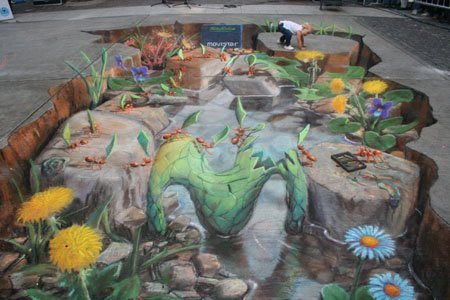 Drawn On A Flat Sidewalk With Colored Chalk.
The Buffalo Theory
"Well Norm, it's like this. . . A herd of buffalo can only move as fast as the slowest buffalo. And when the herd is hunted, it is the slowest and weakest ones at the back that are killed first. This natural selection is good for the herd as a whole, because the speed and health of the whole group keeps improving by the regular killing of the weakest members.
In much the same way, the human brain can only operate as fast as the slowest brain cells. Now, as we know, excessive intake of alcohol kills brain cells. But naturally, it attacks the slowest and weakest brain cells first. In this way, regular consumption of beer eliminates the weaker brain cells, making the brain a faster and more efficient machine. And that, Norm, is why you always feel smarter after a few beers."
(I may have used this story before. Getting older also destroys a lot of weaker brain cells, but I really don't believe it makes you feel much smarter.)
A Redneck Pet Carrier.
A Cell Phone For Seniors
The older you are, the more you can understand it.
|
|
All material in this site may be used to educate everyone, Freemasons and non-Freemasons alike about Freemasonry and for the promotion of Freemasonry. A very sincere effort is made to avoid using any copyrighted material, without permission or giving credit to the author and source, in the creation of this web site. If you discover something that is yours, without giving you due credit, please let me know and due credit will be given or the item will be replaced.
|
|
|

